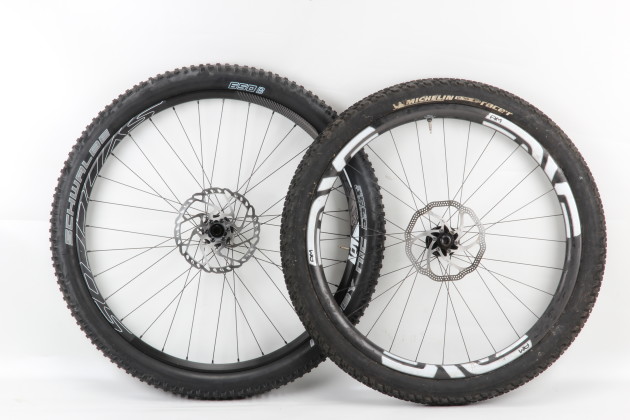In the past few years, a large number of different options, designs, sizes, etc. have appeared…for the rider to choose when deciding which mountain bike is best for him or her. There are hard tail, full suspension, 26″, 27.5″, 650b, 29er and a series of other options, so today we enumerate the common 26-inch and 29-inch differences to help you better choose a bicycle.
26" mountain bike
Generally speaking, 26″ bicycles are very suitable for fast-twitch-type terrain where the rider can react quickly. On the other hand, 26″ bicycles tend to have slower top speeds, and their smaller wheels are riding over bumps, tree roots, rocks, etc. When the tolerance is low…

26" advantage
- The weight is often less than 27.5″ and 29er bicycles, because their smaller wheels and forks can reduce weight
- Smaller wheels are usually more suitable for technical terrain that requires fast reaction time, such as fast twitching trails
- Very suitable for riders of all sizes; larger bikes, such as 29ers, are usually difficult for smaller riders
- Fast offline acceleration
- Increase lateral strength for riders who need high-stroke DH/FR bikes
26" Disadvantages
- Not so forgiving when crossing bumps, tree roots, rocks, etc…
- Slower top speed than bicycles with large wheels
- Smaller wheels require additional suspension to absorb the terrain. By adding foot pedals to the bicycle, this may result in a reduction in suspension efficiency.
- Compared to bicycles with larger wheels, tire marks are smaller, which usually means less traction
- Need higher tire pressure than big wheels
29er mountain bike
As we all know, a 29er mountain bike with a 100-120 mm stroke has a very similar feel to a 26″ bicycle with a 140 mm stroke. Essentially, if you are riding a 29er, you can do more in less time!

29er advantages
- Faster tip speed
- When crossing tree roots, rocks, etc., larger wheels are much more fault tolerant than smaller wheels. Imagine the difference between a full-size truck and a Honda Civic when they cross the same pothole. Potholes are hardly felt on the truck, because of the difference in wheel size, it may feel like it is eating your Civic
- Larger wheels mean you need less suspension travel to absorb the terrain, which usually results in less pedal swing and improved efficiency.
- Ideal for taller riders
- Larger tire footprint on the ground always means increased traction, ideal for climbing and downhill
- Due to the increased traction, the ability to confidently ride on more aggressive terrain without avoiding the obstacles that a 26″ bike may encounter and the overall increased bike stability, 29er will make you a more confident rider
- Long-distance riding is more efficient
- You can drive with lower tire pressure, if you want, you can choose smaller wheels for a smoother and more comfortable ride
- Increase rotation weight
29er disadvantages
- Larger wheels make these bikes unresponsive to fast-vibrating trails; however, in the past you may have just avoided obstacles on 26″ bikes, and you may find yourself running directly over them with larger 29er wheels
- Generally smaller riders are more difficult to adapt
- Larger wheels, front forks and frame tend to add a slight weight to the overall structure
- Slower offline acceleration
- Usually not suitable for DH / FR riders

